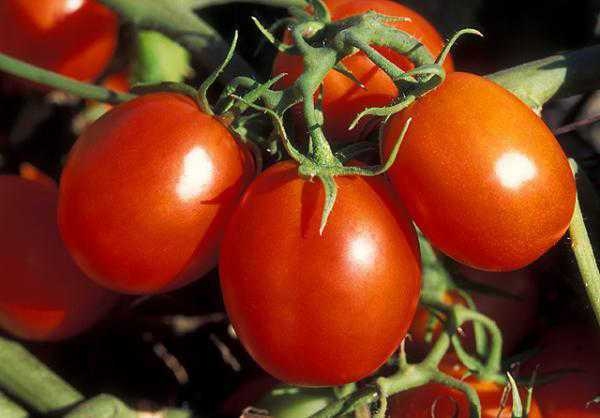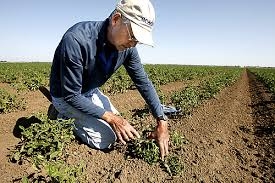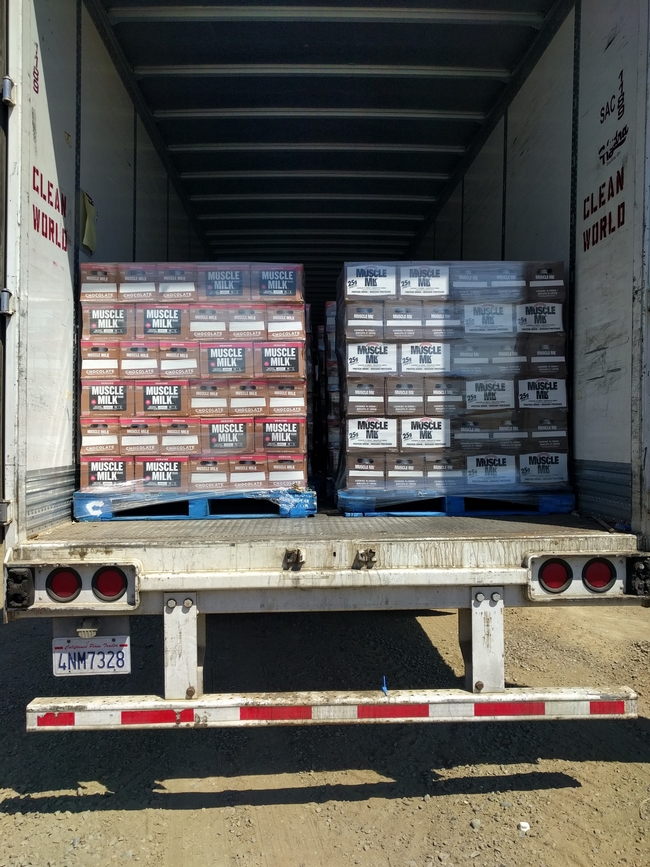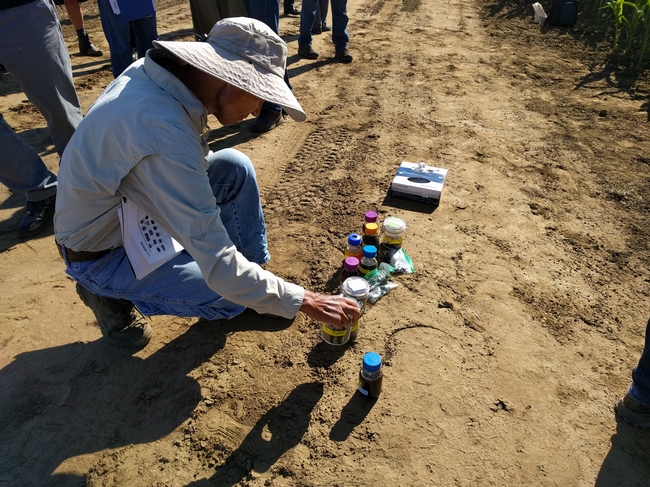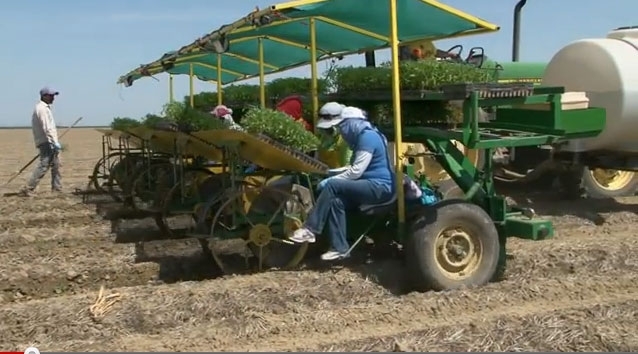Posts Tagged: Gene Miyao
UC updates costs and returns of growing processing tomatoes
The analysis is based upon a hypothetical well-managed farming operation using practices common to the region. The costs, materials and practices shown in this study will not apply to all farms. Growers, UC Cooperative Extension farm advisors and other agricultural associates provided input and reviewed the methods and findings of the study.
The hypothetical 3,500-acre farm, focuses on production costs for growing transplanted processing tomatoes under subsurface drip irrigation on 60-inch beds in San Joaquin County and the lower Sacramento Valley.
The authors describe the assumptions used to identify current costs for production, material inputs, cash and non-cash overhead. Ranging analysis tables show profits over a range of prices and yields. Other tables show the monthly cash costs, the costs and returns per acre, hourly equipment costs, and the whole farm annual equipment, investment and business overhead costs.
The new study, “Sample Costs to Produce Processing Tomatoes, Sub-Surface Drip Irrigated (SDI) in the Sacramento Valley & Northern Delta – 2017,” and sample cost-of-production studies for many other commodities are available for free. To download the cost studies, visit the UC Davis Department of Agricultural and Resource Economics website at http://coststudies.ucdavis.edu.
For additional information or an explanation of the calculations used in the studies, contact the Agricultural Issues Center's Donald Stewart at (530) 752-4651 or destewart@ucdavis.edu, Brenna Aegerter, UC Cooperative Extension farm advisor for San Joaquin County at bjaegerter@ucanr.edu, or Gene Miyao, UC Cooperative Extension farm advisor for Yolo, Solano and Sacramento counties at emmiyao@ucanr.edu.
The cost and returns program is funded by the UC Agricultural Issues Center, which is part of UC Division of Agriculture and Natural Resources, and the UC Davis Department of Agricultural and Resource Economics.
Biodigesters turn food into electricity, but can they also create fertilizer?
On a recent late-summer Wednesday, a freight container filled with cases of expired Muscle Milk protein drink awaited unloading at the UC Davis Renewable Energy Anaerobic Digester (READ) while a front-loader scooped heaps of spoiled vegetables into a mechanical processor. Nourished by a diet of assorted food waste from the UC Davis campus and area restaurants and markets, READ harnesses the activity of billions of microbes to produce biogas capable of generating 5.6 million kWh per year of clean electricity for UC Davis.
But a by-product of READ and other anaerobic digesters – the slurry of leftover solid and liquid material, or digestate – has caught the attention of UC Davis researchers interested in “closing the loop” on food production, consumption, and waste. When processed through an anaerobic digester, organic materials like food discards, expired or off-spec food products, or animal manure can be transformed into concentrated biofertilizers and soil amendments that are highly effective and easily applied to crops.
In an interdisciplinary collaboration at the Russell Ranch Sustainable Agriculture Facility, funded by the California State Water Resources Control Board and the California Department of Food and Agriculture, UC Davis faculty and students have developed a pilot-scale process for commercial production of several forms of this biofertilizer using digestate from READ and other nearby digesters. They are also evaluating their effects on yield and other agronomic metrics in corn and tomato field trials – paving the way for farmers and growers to take advantage of a highly sustainable source of plant nutrition.
The challenge and opportunity of fertilizer from anaerobic biodigesters
The digestate from READ and other digester facilities can be applied directly to soil as a fertilizer, but, because it has a limited shelf-life, it usually must be applied to land in the immediate region of the facility. With the input of food waste that can vary widely from day to day, a facility's digestate is inconsistent in texture and composition, making it difficult to transport and apply to fields using common farm fertilizer equipment.
Filtering and drying this digestate, however, results in solid and liquid forms that can be concentrated, homogenized, easily transported, and applied to soil through existing drip irrigation systems or surface spreading equipment.
This process could allow farmers and growers located further away, and working with common irrigation and fertilizer application equipment, to supplement or replace their synthetic fertilizer consumption with biofertilizers from food waste or animal manure.
How do biodigestate products measure up to synthetic fertilizers?
The research, co-led by professor Ruihong Zhang from the UC Davis Department of Biological and Agricultural Engineering (who also designed READ in partnership with Sacramento-based tech company CleanWorld) and Professor Kate Scow from the Department of Land, Air, and Water Resources, developed pilot-scale systems to efficiently and consistently separate the solid and liquid portions of food- and manure-based digestates. The researchers then examined the nutrient composition of the solid and liquid biofertilizer products, finding that biodigestate-based fertilizers contain valuable nutrients and microbes not found in many synthetic fertilizers.
In current field trials, the researchers are investigating the effects of each of the biofertilizer products on crop yield and quality. Their preliminary results show that it is possible to grow irrigated processing tomatoes and short-season corn using biofertilizer products as the sole source of fertilizer. The origin of the fertilizer matters, however – manure-based liquid fertilizer formed additional large particles after the final filtration, creating concerns about clogging the drip irrigation system. The team thinks an environmentally benign chemical sometimes added to manure digesters to clean the biogas may be the culprit of the problem, but future research is needed. The solid biofertilizer pellets they developed show much promise, as they can be applied using existing methods for spreading compost and can be economically transported farther away from the digester.
In addition to better understanding the best processes for producing and using the biofertilizers, further research is needed to understand how much of the nitrogen in each of the fertilizer products is available for uptake by the crop, as well as economic analyses to determine the commercial-scale production and transportation costs. The researchers will be able to narrow in on the agronomic and economic potential of biofertilizers through the upcoming analysis of the yield of the corn and tomato experiment plots at Russell Ranch. The results of a tomato experiment recently showed that the digestate fertilizers produced just as much fruit as a popular synthetic fertilizer.
Interdisciplinary research for agricultural innovations
Russell Ranch, a program of the Agricultural Sustainability Institute, is designed as a shared space for interdisciplinary research and innovation. The biofertilizer research, among other active projects at Russell Ranch, is an example of the fulfillment of that intention. “The soil scientists are learning engineering, the engineers are learning biology, and the biologists are learning about soil,” Professor Zhang remarked.
The exchange also extends beyond the university: a recent UC Davis Biofertilizer Field Day drew attendees from the UC Division of Agriculture and Natural Resources, several public agencies, the agricultural sector, other universities, nonprofits, entrepreneurs, and food processors. If the research continues to illuminate a way forward for biofertilizers, these audiences may fill important roles in bringing this new technology into practice – and in recycling your lunch leftovers back into a more efficient and sustainable food system.
More information: UC Davis READ, Russell Ranch, and the biofertilizer research
The UC Davis Renewable Energy Anaerobic Digester was unveiled in 2014 as the nation's largest anaerobic biodigester on a college campus, and represented a unique private-public partnership. Professor Ruihong Zhang invented the anaerobic digestion technology used by CleanWorld, which developed it into one of the most advanced commercially-available digester systems in the country.
Russell Ranch Sustainable Agriculture Facility is a “living laboratory” for interdisciplinary field research and innovation. Its flagship project, the Century Experiment, measures the long-term impacts of energy, water, carbon, and nitrogen inputs on agricultural sustainability in the flagship Century Experiment.
The biofertilizer research collaboration includes Zhang Lab graduate students Tyler Barzee and Hossein Edalati, Scow Lab postdoctoral researcher Daoyuan Wang, and Russell Ranch manager Israel Herrera. Collaborating institutions include CleanWorld, California Bioenergy, New Hope Dairy (Galt, CA), Fiscalini Dairy (Modesto, CA), and Sacramento Municipal Utility District.
This story en español.
New UC studies outline costs of growing tomatoes under furrow and sub-surface drip irrigation
Two new costs and returns studies for growing transplanted processing tomatoes under furrow irrigation and sub-surface drip irrigation (SDI) in the Sacramento Valley and northern delta are available from the University of California Cooperative Extension.
The studies focus primarily on production costs in the counties of Yolo, Solano, Sacramento and San Joaquin. The two separate studies list estimated production costs for growing transplanted processing tomatoes under furrow irrigation and under sub-surface drip irrigation on 60-inch beds.
The major differences between the two companion studies are inputs related to irrigation and tillage and from yield outcome.
Each analysis is based upon a hypothetical farm operation using practices common to the region. Input and reviews were provided by growers, pest control advisers and other agricultural associates. Assumptions used to identify current costs for individual crops, material inputs, cash and non-cash overhead are described. A ranging analysis table shows profits over a range of prices and yields. Other tables show the monthly cash costs, the costs and returns per acre, hourly equipment costs, and the whole farm annual equipment, investment and business overhead costs.
These two studies –“Sample Costs to Produce Processing Tomatoes, Sub-Surface Drip Irrigated (SDI) in the Sacramento Valley & Northern Delta - 2014” and “Sample Costs to Produce Processing Tomatoes, Furrow Irrigated in the Sacramento Valley & Northern Delta - 2014” – and other sample cost of production studies for many commodities are available and can be downloaded from the Agriculture and Resource Economics Department website, http://coststudies.ucdavis.edu. Some archived studies are also available on the website at http://coststudies.ucdavis.edu/archived.php
For additional information or an explanation of the calculations used in the study contact Karen Klonsky, UC Cooperative Extension specialist in the Department of Agricultural and Resource Economics at UC Davis, at (530) 752-3589, klonsky@primal.ucdavis.edu; or Don Stewart, staff research associate, (530) 752-4651, destewart@ucdavis.edu.
The studies were prepared by Gene Miyao, UCCE advisor, Yolo and Solano Counties; Brenna Aegerter, UCCE advisor, San Joaquin County; Karen Klonsky and Don Stewart.
Cool weather is slowing down agricultural crops
California's cool, wet spring is putting a damper on the state's agricultural industry, the Sacramento Bee reported today. Watermelon may not be ready for the Fourth of July, and tomato harvests likely will be delayed.
The problem for tomato growers has been persistently wet fields, UC Cooperative Extension farm advisor Gene Miyao told the newspaper.
"Under wet conditions, (planting) causes soil compactions. That affects root growth. Irrigation (water) doesn't infiltrate as well," Miyao was quoted. "I think it certainly is a concern."
Waiting for soil to dry means risking that rain will fall again before planting. Greenhouse growers can't move young-plant inventory to fields on schedule. And at harvest time, some growers must wait for processor capacity. Tomatoes may rot in the field or face exposure to insects while waiting, Miyao said.
Weekend temperatures were among the coldest in more than a half-century from Redding to Stockton, the Bee reported.
In addition, Bakersfield set a record Sunday when the mercury reached just 67 degrees, and wind advisories were in place over the weekend in the coastal areas of Los Angeles County and in the Antelope Valley, according to the National Weather Service. (As reported by the Bakersfield Californian and Los Angeles Times.)
Farmers can expect no relief in the next few days. The National Weather Service has issued winter storm watches for the Sierra Nevada and predicts rain throughout California tomorrow.

